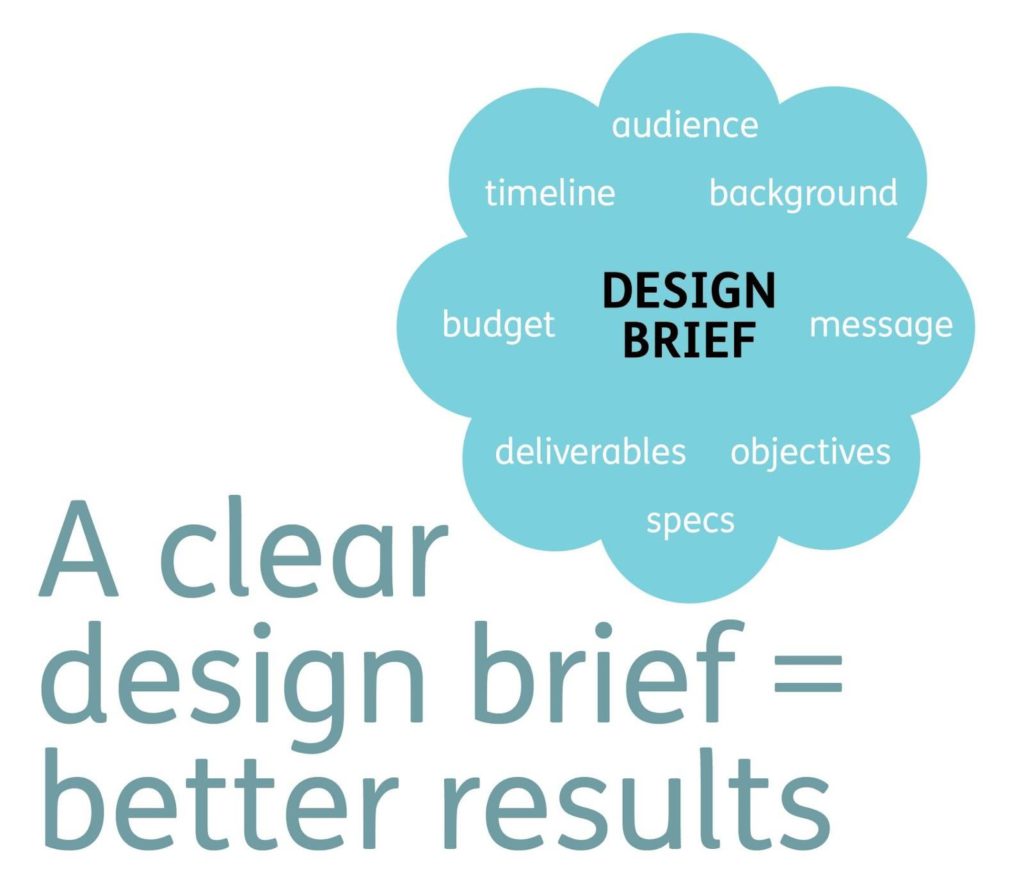
Table of Contents
- 6 Tips to Create Design Briefs
- Key Takeaways
- Conclusion
- FAQs
The first step in designing anything, be it a building, a website, or a pamphlet, is to finalize the features and characteristics of the product. The more detailed and organized the finalization is, the truer the outcome will be to its design proposal. And this is where a design brief comes in.
A design brief is essentially a document that contains specific design outlines for any design project. When designers or design teams formulate design ideas for a project, they create a succinct way to record their ideas and present them to the client. Today, the internet is flooded with design brief ideas. But what will make your brief actually stand out?

Design briefs are crucial, as they systematically catalog all the details of an assignment, the needs and requirements put forward by the clients, and other project attributes such as the designing budget, deadline, and client suggestions.
Having a well-documented design brief ensures that the project does not deviate at any point from its set direction. Furthermore, it also helps designers go about the process in an optimum manner. This saves them both time and money and enables them to deliver quality work as per schedule.
So far, we have gone through what a design brief is and what its purpose is. Now, it is time to discuss the tips to create design briefs that will check all the right boxes.
6 Tips to Create Design Briefs
Knowing how to create a successful design brief requires you to keep in mind some crucial elements that define the framework of the brief. Also, certain factors like the nature of the client’s industry, market analysis, customer base, etc., need to be considered while writing a design brief. Here are six pointers that will help you write a good design brief.
1. Define the objectives of the project
Before starting with any design project, it is imperative for the client and designer to put forward what the project entails. Has the client already decided upon the look and feel of the project? Is the project just a remodel or a complete overhaul? There are two major objectives that should be mentioned in the brief.
Also, there are times when a client is unable to communicate a project’s requirements. In such scenarios, having a well-thought-out template can help designers elicit responses from the client and list out the intricacies of a design project.
2. Do a pre-development background check
One tip that every designer needs to abide by when creating a design brief is a background check of the client’s business or industry. When designers are aware of the context of the client’s work, they are able to write design briefs better.
It is also recommended that you have a discussion with the client regarding their core values, brand image, business goals, and the scale of the business. This will help you understand the nuances of the design that the client wants you to create.
3. List out the specifics
Once you have laid out the objectives and done a background analysis of the client, the next step is to state to the client what work you will be doing in the design project. When you make the clients aware of all the resources that will go into the completion of the project, you can rest assured that you’re following a transparent process.
This is also a great way to let the client give the project more thought. And when mentioning your work, make it a point to be as clear and precise as possible. This ensures that both you and the client agree to the terms of your work.
4. Be upfront about budget and delivery schedules
A project’s budget and its deadline are the most important elements of any business deal.
When you are offered a project, you would want to know the budget beforehand to decide how much time and resources you will put into it. Thus, when discussing price quotations with the client, make sure to be upfront about the project’s needs and how the budget will play a significant role in determining the quality of your work. It is only when all the parties involved agree on the price that you should go ahead with project development.
When setting the timeline for a project, most clients are unaware of how long it will take to reach the completion stage. You must take the lead and let the clients know the amount of time it’ll take for you to complete the project. Keep in mind to not quote any unrealistic deadlines in order to appease the client. Also, the project schedule should be such that it doesn’t put any mental or physical strain on you and your teammates.
5. Understand the demographics of your target audience
To make sure your design delivers what it must, have some data on who the project is targeted at. It not only directs the flow of your work but also reduces the probabilities of future revisions. Hence, when you create a design brief, make sure it includes data on who the target audience is and what their preferences are.
6. Know who your competitors are
When you’re aware of who you are competing against, it gives you the necessary push to make designs that are creative, unique, and better than what others can offer. Before you start working on a design project, study your competition and get a good idea of the landscape you are venturing into. You don’t have to write all of it down in the design brief. Even key pointers will help you in devising fresh and original ideas for your work.
Key Takeaways
- A design brief is a document that contains the outline and guidelines of a project.
- A design brief is necessary to decide the flow and scope of a design project.
- A design brief should contain all the details and intricacies of the project.
Conclusion
A good design brief is like a guiding light for a project. It details the plan of action required for the project and encourages your team to work in a uniform pattern, with the same objectives in mind. While writing a good brief is difficult, with some patience and practice, all designers can do it. And don’t forget to follow the design brief ideas mentioned above.

FAQs
A design should include the details of the project, the client’s details, budget, schedule, and project’s scope.
An effective design brief offers about the project and helps designers offer the intended result.
A design brief contains salient information about, design project along with client details and pre-defined objectives.
Get a good idea about the company you’re designing the brief for; analyze your target audience; determine what type of industry it is; gauge the level of competition; and set a timeline and budget.
Latest Blogs
Explore how Google’s 2025 AI search updates triggered ranking chaos. Learn actionable strategies to adapt your SEO for AI Overviews, zero-click searches, and SERP volatility. Stay ahead now.
Learn how to rank on AI search engines like ChatGPT, Perplexity, and Gemini by optimizing your content for authority, structure, and relevance. Stay ahead in AI-driven search with this strategic guide.
Explore the best healthcare SEO services for your medical practice. Improve online visibility and effectively reach more patients in need of your services.
Get your hands on the latest news!
Similar Posts

Design
7 mins read
15 Best Firms Offering Design Services in India

Design
5 mins read
All You Need to Know About Data-Driven Design

Design
6 mins read